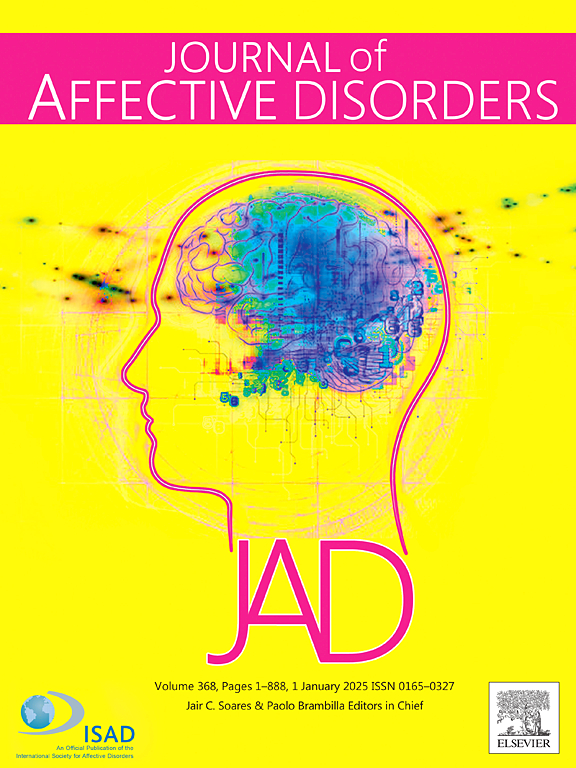Association between multimorbidity trajectories and subsequent cognitive decline: evidence from two nationwide longitudinal cohorts
IF 4.9
2区 医学
Q1 CLINICAL NEUROLOGY
引用次数: 0
Abstract
Background
The number of chronic diseases in a patient may change over time, but how multimorbidity developmental trajectories affect subsequent cognitive decline remains unknown.
Methods
Data were drawn from eight waves (2004–2018) of the English Longitudinal Study of Ageing (ELSA) and the Health and Retirement Study (HRS), involving 5300 and 4357 participants, respectively. Group-based trajectory modeling was used to identify multimorbidity trajectories over six years (2004–2010) according to ten chronic diseases. We performed linear mixed-effects models to investigate the association between multimorbidity trajectories and subsequent cognitive decline in global cognition and three cognitive domains, including memory, executive function, and orientation.
Results
Three multimorbidity trajectories (low-stable, moderate-increasing, and rapid-increasing) were identified in two cohorts. Compared to the low-stable trajectory group, the moderate-increasing trajectory group exhibited faster declines in memory [pooled β = −0.027 standard deviation (SD)/year, 95 % confidence interval (CI): −0.044 to −0.011], orientation (pooled β = −0.036 SD/year, 95 % CI: −0.066 to −0.006), and global cognition (pooled β = −0.043 SD/year, 95 % CI: −0.084 to −0.002). Furthermore, the rapid-increasing trajectory group was associated with steeper declines in memory (pooled β = −0.049 SD/year, 95 % CI: −0.084 to −0.015), executive function (pooled β = −0.044 SD/year, 95 % CI: −0.065 to −0.022), orientation (pooled β = −0.077 SD/year, 95 % CI: −0.116 to −0.037), and global cognition (pooled β = −0.138 SD/year, 95 % CI: −0.211 to −0.065).
Limitations
Limited by the structure of questionnaire, some of the information was derived by self-report, which may lead to recalling bias.
Conclusions
Both moderately and rapidly increased multimorbidity are associated with accelerated cognitive decline among older people. Multimorbidity surveillance and management might help to delay the decline rate of cognition.
多病轨迹与随后的认知能力下降之间的关联:来自两个全国性纵向队列的证据。
背景:患者中慢性疾病的数量可能会随着时间的推移而改变,但多病发展轨迹如何影响随后的认知能力下降仍然未知。方法:数据来自英国纵向研究(ELSA)和健康与退休研究(HRS)的8波(2004-2018),分别涉及5300名和4357名参与者。根据10种慢性疾病,使用基于组的轨迹建模来确定6年(2004-2010年)的多病轨迹。我们采用线性混合效应模型来研究多病轨迹与随后的全球认知和三个认知领域(包括记忆、执行功能和定向)认知能力下降之间的关系。结果:在两个队列中确定了三种多发病轨迹(低稳定、中等增长和快速增长)。低稳态轨迹组相比,moderate-increasing轨迹组表现出更快的记忆下降[合用β = -0.027标准差(SD) /年,95 %可信区间(CI): -0.044 - -0.011),取向(合用β = -0.036 SD /年,95 % CI: -0.066 - -0.006),和全球认知(合用β = -0.043 SD /年,95 % CI: -0.084 - -0.002)。此外,快速增长轨道集团与陡峭的下降在内存中(合用β = -0.049 SD /年,95 % CI: -0.084 - -0.015),执行功能(合用β = -0.044 SD /年,95 % CI: -0.065 - -0.022),取向(合用β = -0.077 SD /年,95 % CI: -0.116 - -0.037),和全球认知(合用β = -0.138 SD /年,95 % CI: -0.211 - -0.065)。局限性:受问卷结构的限制,部分信息来源于自我报告,可能导致回忆偏倚。结论:中度和快速增加的多重发病率与老年人认知能力下降加速有关。多病监测和管理可能有助于延缓认知能力下降的速度。
本文章由计算机程序翻译,如有差异,请以英文原文为准。
求助全文
约1分钟内获得全文
求助全文
来源期刊

Journal of affective disorders
医学-精神病学
CiteScore
10.90
自引率
6.10%
发文量
1319
审稿时长
9.3 weeks
期刊介绍:
The Journal of Affective Disorders publishes papers concerned with affective disorders in the widest sense: depression, mania, mood spectrum, emotions and personality, anxiety and stress. It is interdisciplinary and aims to bring together different approaches for a diverse readership. Top quality papers will be accepted dealing with any aspect of affective disorders, including neuroimaging, cognitive neurosciences, genetics, molecular biology, experimental and clinical neurosciences, pharmacology, neuroimmunoendocrinology, intervention and treatment trials.
 求助内容:
求助内容: 应助结果提醒方式:
应助结果提醒方式:


